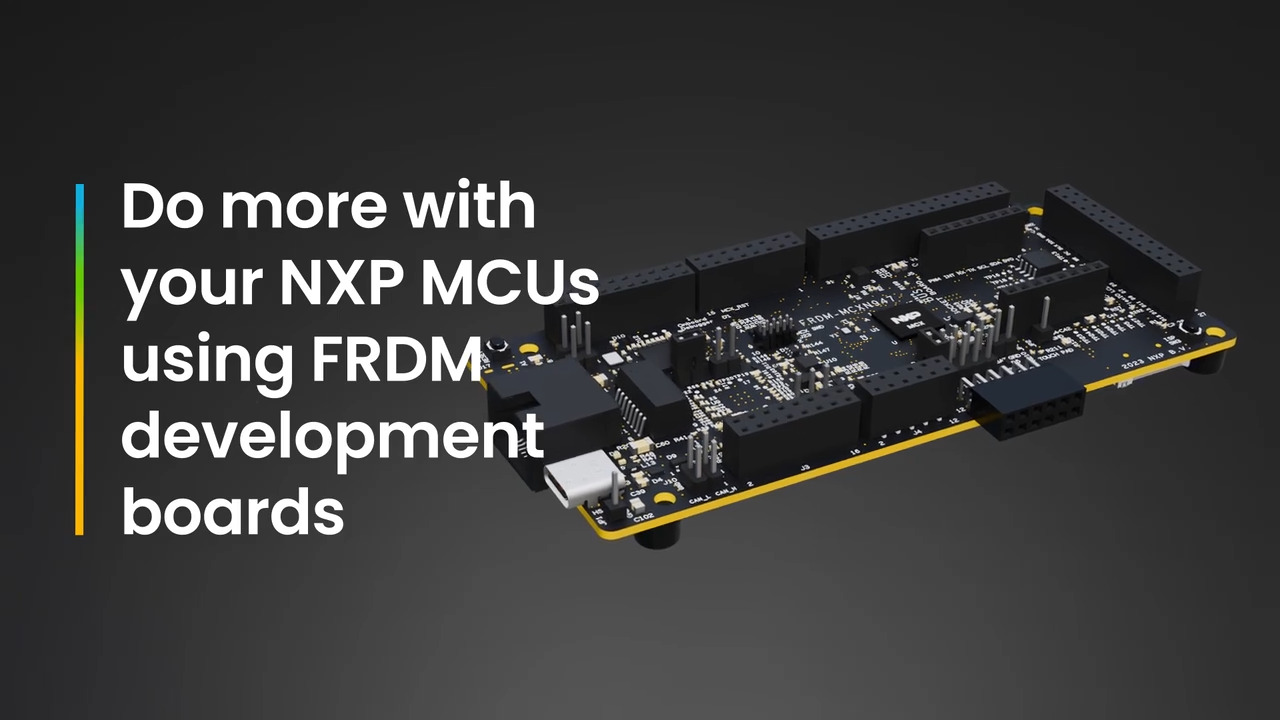NXP Microcontrollers: The Core "Chip" Power in Automotive Electronics – In-Depth Analysis and Practical Applications

Amidst the rapid evolution of the automotive industry, the Microcontroller Unit (MCU) undoubtedly serves as the core engine driving technological innovation. From traditional Engine Control Units (ECUs) to Advanced Driver-Assistance Systems (ADAS), and further to powertrain management in Electric Vehicles (EVs), the performance and reliability of MCUs directly determine a vehicle's level of intelligence, energy efficiency, and ultimately, the driving experience. As an engineer with years of experience in the automotive electronics field, I understand deeply how critical selecting the right MCU is for project success. Today, using NXP microcontrollers like the MC9S12XEP100, MC9S12XS128, and the S32K family as examples, we will delve into their pivotal roles in automotive applications and share insights and reflections from my practical project experience.
The Automotive "Heart": Core Strengths of NXP Microcontrollers
As a globally leading automotive electronics supplier, NXP's microcontroller portfolio is highly regarded in the industry. Taking the MC9S12XEP100 and MC9S12XS128 as examples, these 16-bit microcontrollers based on the S12X architecture, while potentially less powerful in raw computation than the latest 32-bit Cortex-M families, remain indispensable choices in many automotive subsystems due to their advantages in real-time performance, reliability, and cost-effectiveness. They perform exceptionally well, particularly in traditional body control, auxiliary powertrain management, and certain sensor interface processing where demanding real-time response is crucial.
NXP's 32-bit S32K family, especially models like the S32K39, represents the cutting edge of current automotive MCUs. They feature high-performance Arm Cortex-M7 multi-core processors, with clock speeds up to 320 MHz, and integrate large flash memory (up to 6MB) and SRAM (800KB). This enables the S32K39 to easily handle computationally intensive applications in electric vehicles, such as complex Battery Management Systems (BMS), motor control inverters, and domain controllers.
1. Superior Power Efficiency: Safeguarding the Electric Future
In the era of electric vehicles, driving range is one of the most critical metrics for consumers. Consequently, the power efficiency of MCUs becomes particularly paramount. NXP microcontrollers, especially the S32K39 series, significantly optimize the efficiency of EV traction inverters and battery management systems through their high-precision, high-speed control mechanisms. In one of my BMS projects, we compared the energy consumption of different MCU solutions. The NXP S32K39, leveraging its optimized power management and efficient PWM control, reduced the overall energy loss of the BMS system by nearly 5%, contributing directly and significantly to improving the actual driving range of the electric vehicle.
Practical Experience: When designing a regenerative braking system for an electric vehicle, the MCU's fast response capability and precise control are fundamental for achieving efficient energy conversion. The high-speed ADCs and flexible PWM modules of the NXP S32K family allowed us to monitor battery status in real-time and dynamically adjust the energy recuperation strategy based on driving conditions, thereby maximizing the recovery of braking energy and enhancing overall vehicle efficiency.
2. Functional Safety and Cybersecurity: The Lifelines of Automotive Electronics
Functional Safety and Cybersecurity in automotive electronic systems are non-negotiable imperatives. NXP microcontrollers have invested heavily in R&D in these areas. For instance, the S32K39 is designed in strict compliance with the ISO 26262 functional safety standard (up to ASIL-D) and the ISO/SAE 21434 cybersecurity standard. This means potential failure modes and security threats were considered from the design phase, addressed through various means like hardware redundancy, error detection and correction mechanisms, secure boot, and cryptographic modules, ensuring reliable system operation and data integrity even under extreme conditions.
Professional Insight: With the rise of the Software-Defined Vehicle (SDV), automotive E/E architecture is evolving from distributed to domain/zone controller-based. MCUs like the S32K39 not only provide substantial computational power but also, with their integrated Hardware Security Modules (HSMs) and AUTOSAR-compliant software stacks, offer a solid foundation for building secure in-vehicle networks and enabling Over-The-Air (OTA) updates. Having participated in the development of an autonomous driving domain controller, the hardware security features of the NXP MCU greatly simplified our process for meeting functional safety and cybersecurity certification requirements, shortening the development cycle.
3. Diverse Application Scenarios: From Powertrain to Smart Cockpit
NXP microcontrollers are not focused on a single domain; their strong versatility and scalability make them suitable for various subsystems across the vehicle.
Electric Vehicle Control: Beyond BMS and motor control, NXP MCUs play a central role in key components like On-Board Chargers (OBCs) and DC/DC converters, ensuring the stability and efficiency of the electrical system.
Advanced Driver-Assistance Systems (ADAS): From simple parking assistance to complex L2+ autonomous driving functions, NXP processors and microcontrollers provide powerful heterogeneous computing capabilities, supporting data fusion and real-time processing for radar, camera, and ultrasonic sensors, enabling functions like Lane Keep Assist and Automatic Emergency Braking.
In-Vehicle Infotainment and Connectivity: NXP MCUs deliver sufficient processing power to drive high-definition displays, smooth user interfaces, and support various wireless communication protocols (e.g., Wi-Fi, Bluetooth, 5G), enabling Vehicle-to-Everything (V2X) functionality and providing rich entertainment and information services for occupants.
Body Electronics and Comfort Systems: In traditional body electronic modules like window control, seat adjustment, lighting control, and door locks, NXP's 16-bit or entry-level 32-bit MCUs continue to play vital roles due to their high integration, low power consumption, and high reliability.
Experience Sharing: During the development of a smart cockpit project, we utilized NXP's i.MX application processors (though not MCUs, part of the same ecosystem) combined with S32K series MCUs to achieve multi-screen interactivity, voice interaction, and OTA updates. The S32K MCU handled real-time critical tasks for body control and safety monitoring, while the i.MX handled complex graphics rendering and application-level computations. Working in synergy, they built a high-performance, highly reliable smart cockpit system.

Development Platforms and Tools: Accelerating Innovation
Excellent hardware requires strong development toolchain support. NXP provides developers with a comprehensive ecosystem to accelerate product development and time-to-market.
S32 Design Studio: This is the official Integrated Development Environment (IDE) from NXP. Based on Eclipse, it supports development for the S32K family, integrating compilers, debuggers, and configuration tools, significantly streamlining the development workflow.
TASKING VX-toolset: As a key component within the TECH TOOLBOX, the TASKING VX-toolset is designed for Arm architectures and supports embedded software development. Its tight integration with NXP's Real-Time Drivers (RTD), particularly for microcontrollers like the S32K388 used in zonal aggregation, enables efficient software optimization, which is crucial for safety-oriented systems like airbags and automotive sensor clusters.
NXP Real-Time Drivers (RTD): These optimized drivers provide support for hardware abstraction, allowing developers to focus more on application logic implementation without delving deeply into low-level register operations.
Practical Advice: For engineers new to the NXP S32K platform, I highly recommend starting with the S32 Design Studio and the SDK (Software Development Kit) provided by NXP. The SDK contains abundant example code and drivers, facilitating a quick start. Simultaneously, mastering professional tools like the TASKING VX-toolset is essential for deep optimization and troubleshooting. Leveraging its advanced debugging features can effectively locate and resolve complex embedded software issues.
Conclusion
NXP's deep involvement in the automotive electronics sector has made its microcontrollers an indispensable force driving vehicle intelligence, electrification, and connectivity. From the stable performance of the MC9S12XEP100 and MC9S12XS128 in traditional control applications to the innovative breakthroughs of the S32K39 in electric vehicles and ADAS domains, NXP is consistently committed to delivering high-performance, high-security, and highly reliable solutions. As engineers, deeply understanding the technical principles and application potential behind these core "chip" powers, and skillfully utilizing the provided development tools, will be key for us to develop the next generation of automotive products in this rapidly changing era. The future is here. On the new "chip" journey of automotive electronics, NXP travels alongside us.
See Also
Effortless Engine Management with SPC56 Microcontrollers
Diving into MC9S12DJ256MFUE Specs for Auto Uses
Key Features of SPC5605BMLL6 and SPC5607BMLL6 ECUs
CALL US DIRECTLY
(+86)755-82724686
RM2508,BlockA,JiaheHuaqiangBuilding,ShenNanMiddleRd,Futian District,Shenzhen,518031,CN
www.keepboomingtech.com sales@keepboomingtech.com
